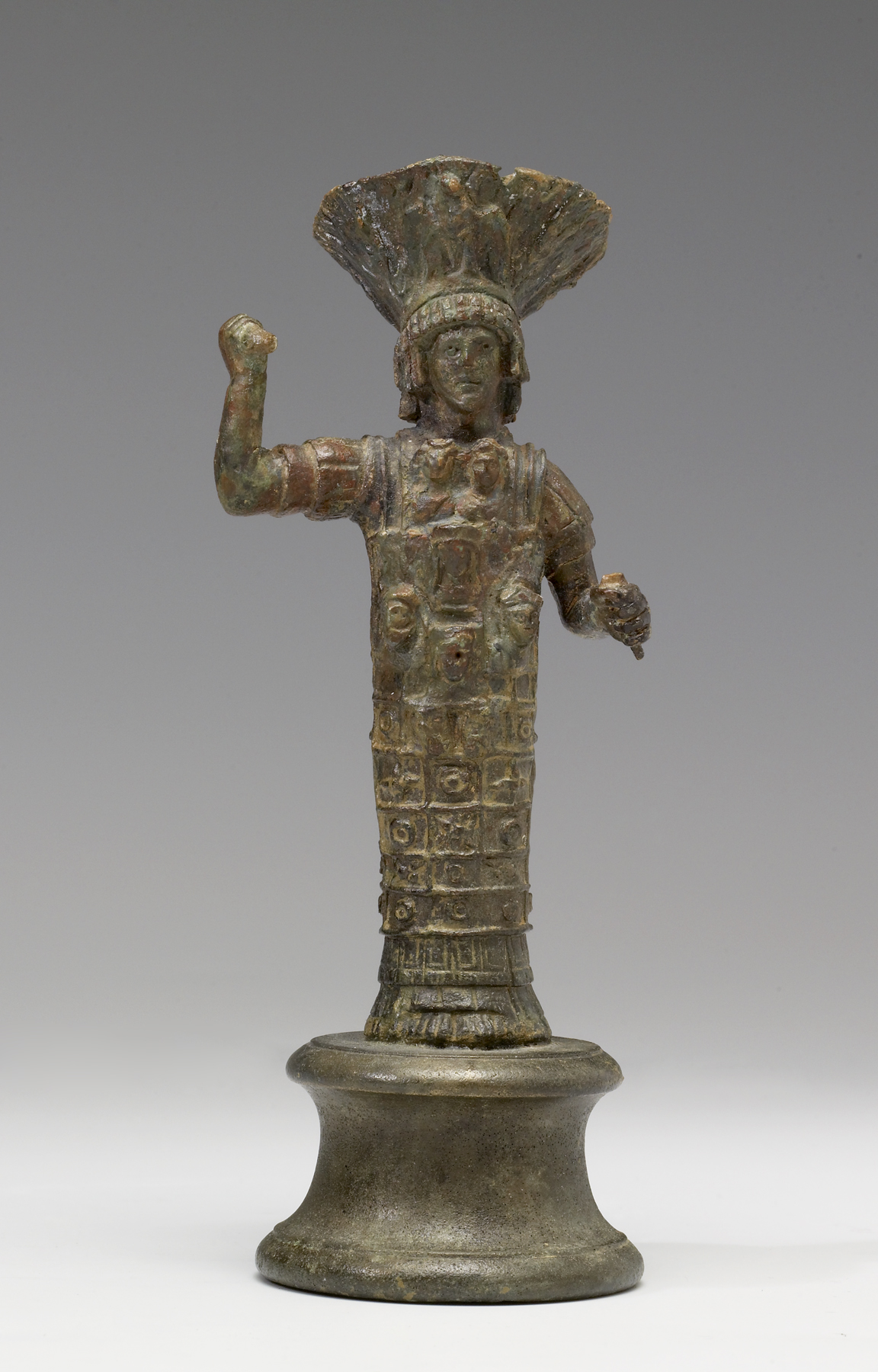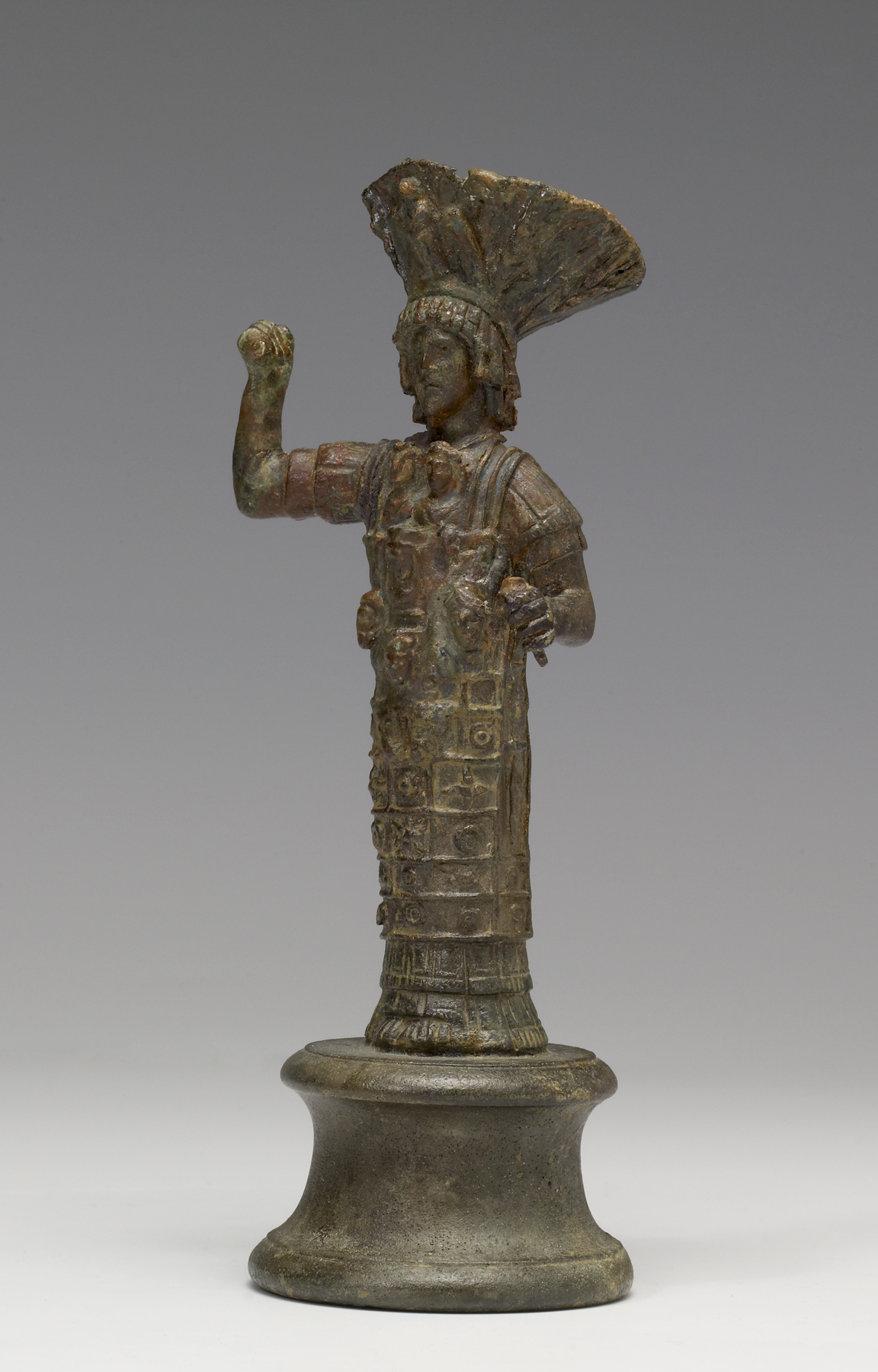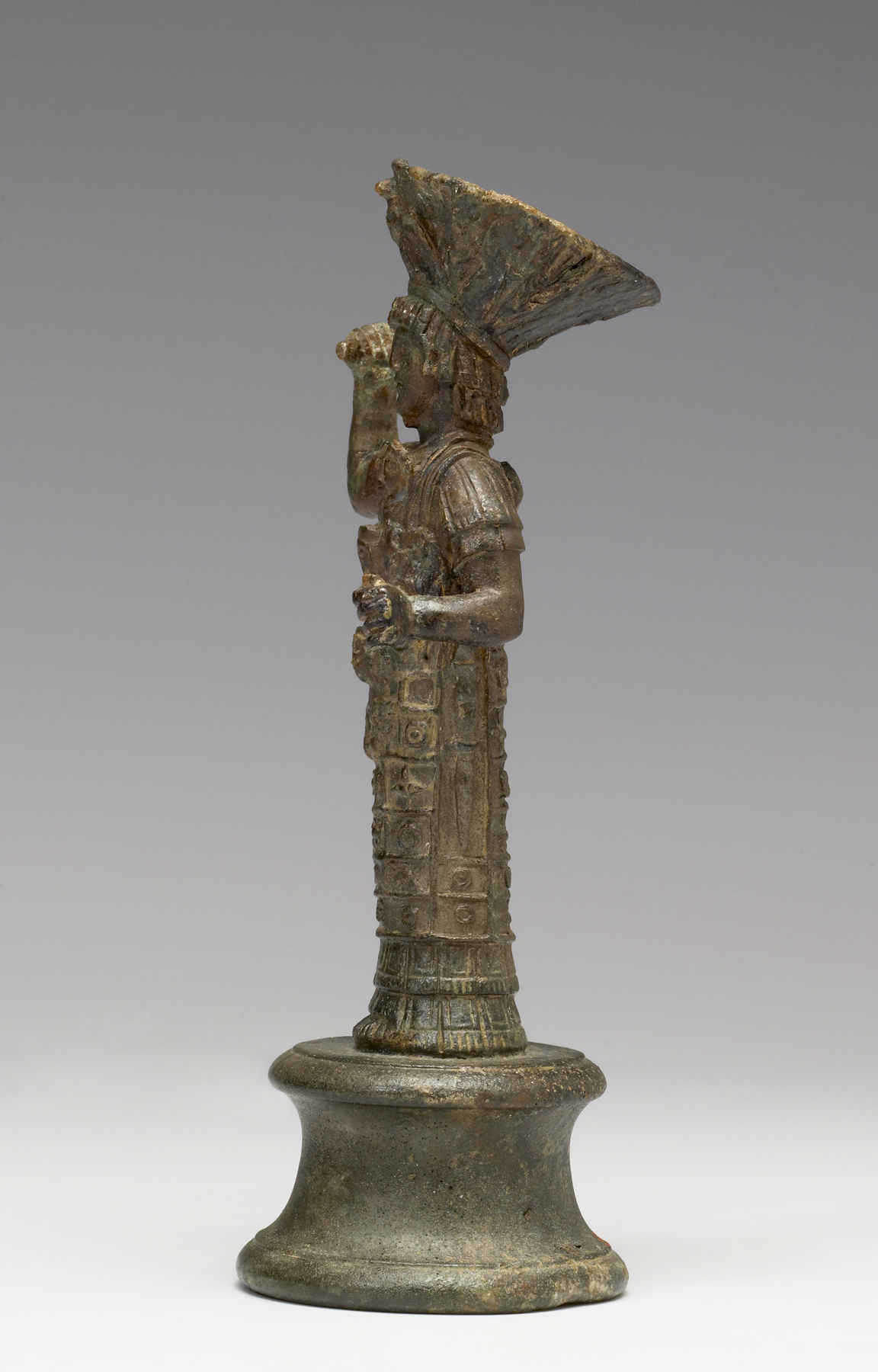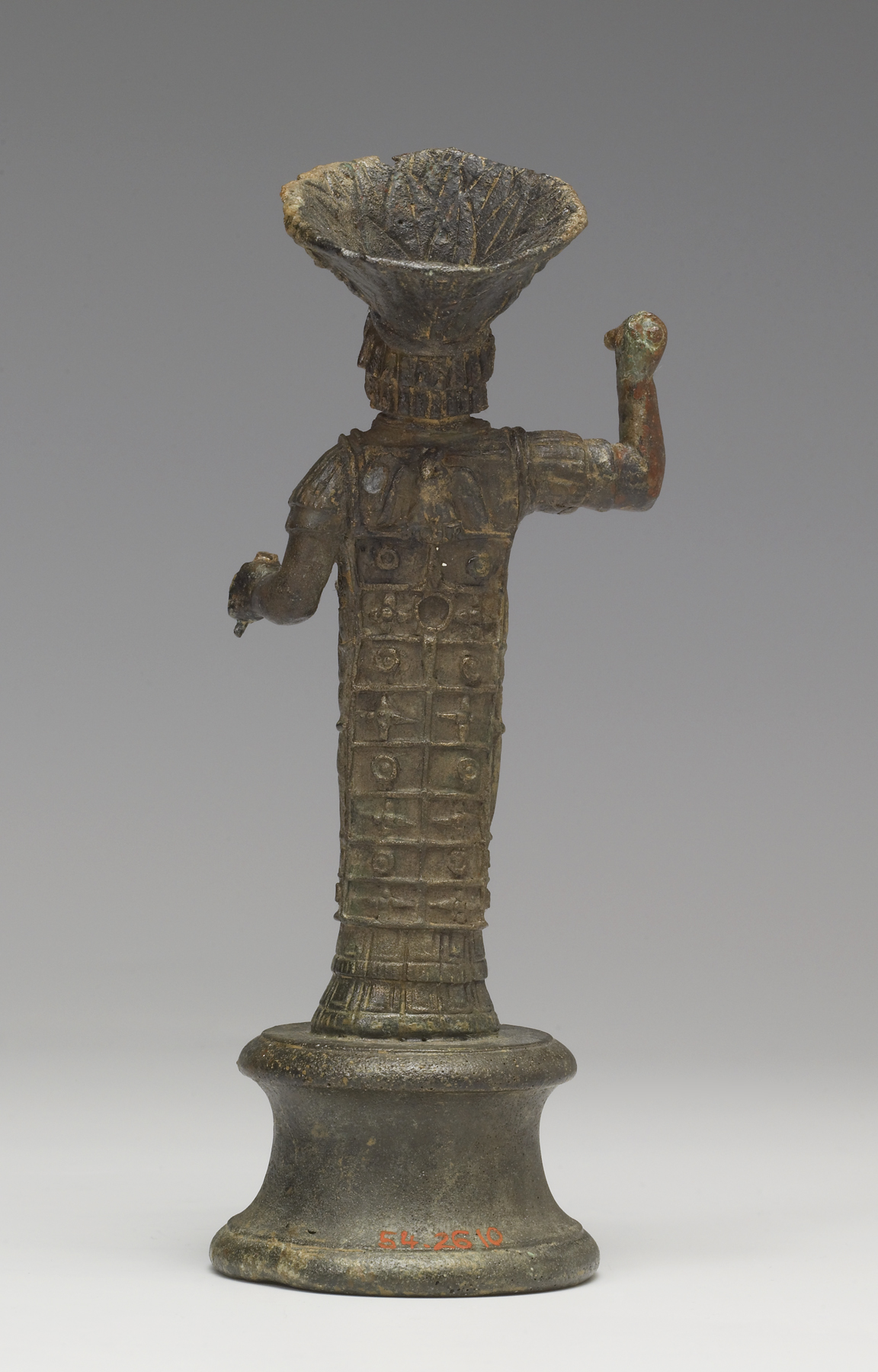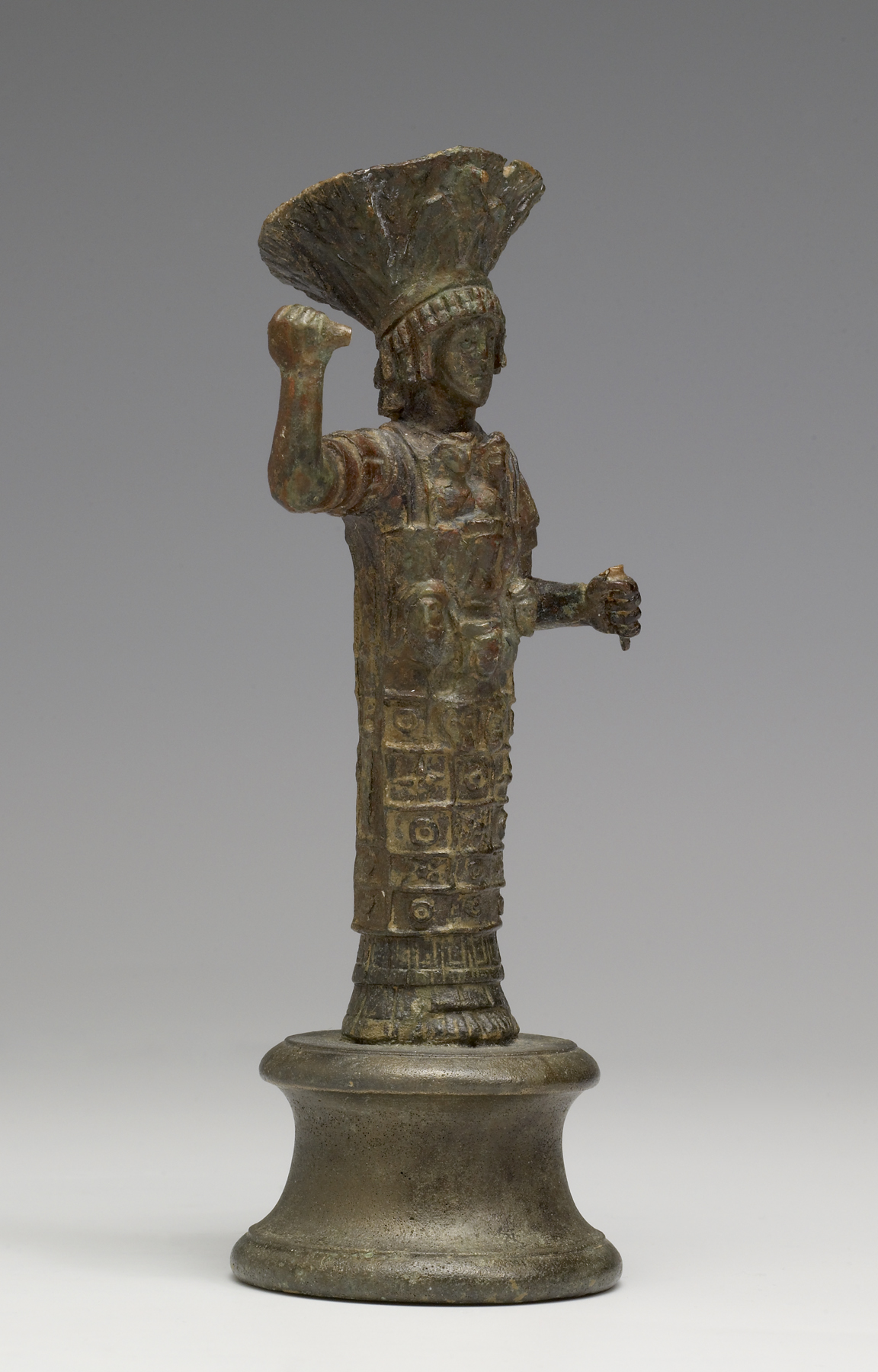Zeus Labraundos
(Roman Empire )
Many religions were syncretistic, meaning that as they grew and came into contact with other religions, they adopted new beliefs and modified their practices to reflect their changing environment. Both Greek and Roman religious beliefs were deeply influenced by the so-called mystery religions of the East, including the Egyptian cult of Isis, which revealed beliefs and practices to the initiated that remained unexplained, or mysterious, to the uninitiated. Most popular Roman cults had associations with these mystery religions and included the prospect of an afterlife.
Zeus Labraundos was a local version of Zeus from Mylasa in Caria (southwestern Asia Minor), of whom very few representations exist except on Roman coins. The front of his apron-like garment is decorated with images of divinities and astral symbols. On his head, he wears a tall headdress with lotus elements reflecting Egyptian influences and the eagle of Zeus at the front.
Provenance
Provenance (from the French provenir, 'to come from/forth') is the chronology of the ownership, custody, or location of a historical object. Learn more about provenance at the Walters.
Jerome Eisenberg, Royal Athena Galleries, New York, by 1983 [mode of acquisition unknown]; Dr. Frederick G. Stern, Potomac, Maryland, by 1984, by purchase; Walters Art Museum, 1984, by gift.
Conservation
| Date | Description | Narrative |
|---|---|---|
| Examination | Examined | |
| Examination | Examined in preparation for case retro-fit and re-installation. |
Geographies
Italy, Rome (Place of Origin)
Measurements
H: 5 1/2 x W: 1 15/16 x D: 1 15/16 in. (13.9 x 4.9 x 4.9 cm)
Credit Line
Gift of Dr. Frederick G. Stern, 1984
Location in Museum
Accession Number
In libraries, galleries, museums, and archives, an accession number is a unique identifier assigned to each object in the collection.
In libraries, galleries, museums, and archives, an accession number is a unique identifier assigned to each object in the collection.
54.2610

